First Drive: The Bizzarrini 5300 GT Corsa Revival Is a $1.9 Million Time Machine to 1960s-Era Le Mans
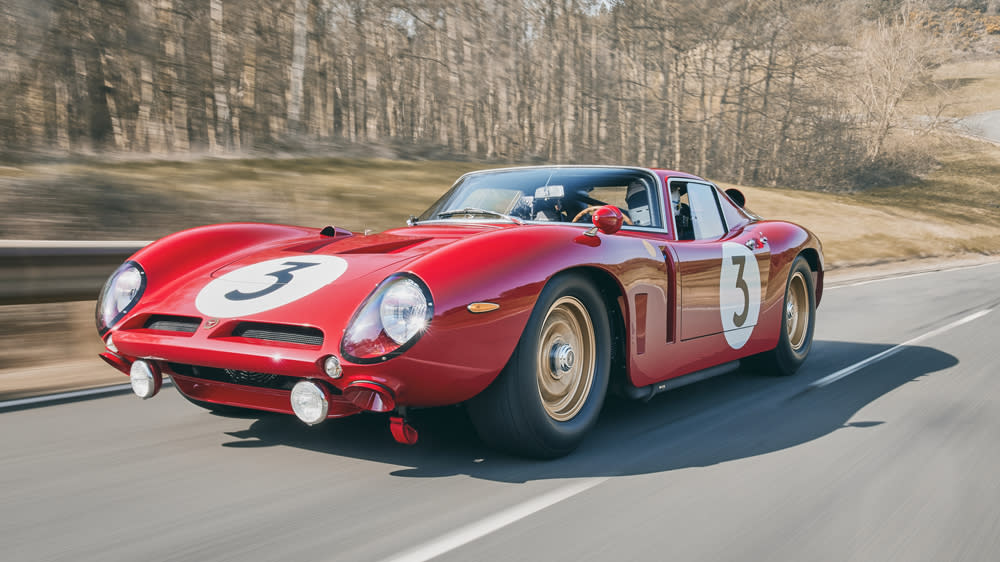
Wow, this is intense. A five-point harness squeezes my ribcage as a raucous V-8 bellows into my ears. The weighty steering wants constant attention, the non-servo brakes demand a strong shove and the cross-ply tires clearly prefer slipping to gripping. I had already broken a sweat; now the heat-soak through the bulkhead makes doubly sure. Imagine doing this for lap after lap at Le Mans.
My stint in the Bizzarrini 5300 GT Corsa Revival lasts considerably less than 24 hours, but there’s no doubt this continuation car recreates the rawness—and the romance—of driving a classic sports racer. The first fruit from the reborn Bizzarrini brand, the extremely limited-edition model is based on “car 222,” which won its class at Le Mans in 1965 and is now part of Bruce Meyer’s collection at the Petersen Museum. Just 24 examples of the continuation will be made, each priced at $1.9 million.
More from Robb Report
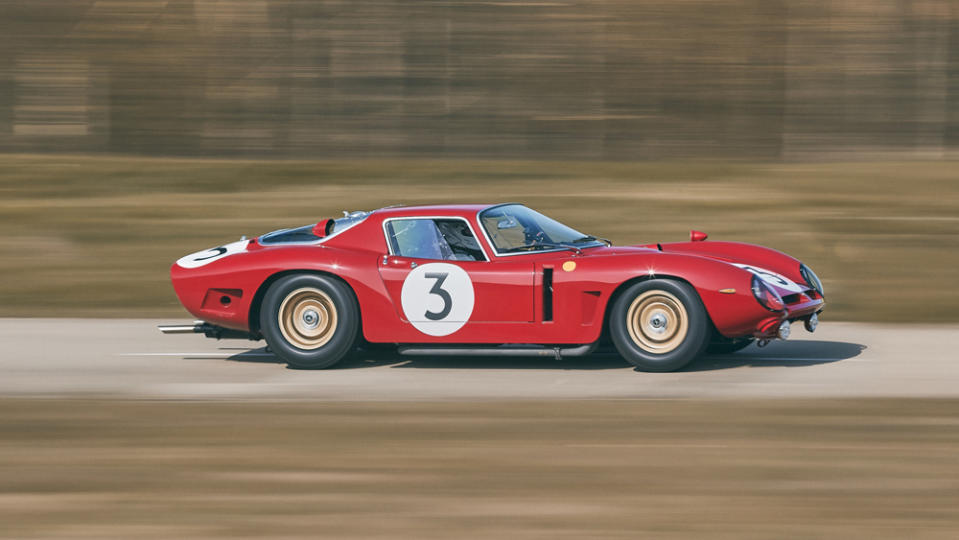
Before we look closer at the “new” Bizzarrini—and the V-12 hypercar the company plans to launch next—let’s recap the story so far. Giotto Bizzarrini is one of the behind-the-scenes heroes of the auto industry: a humble man who helped define the Italian supercar, then took on the world’s greatest race.
Having studied aerodynamics at the University of Pisa, Bizzarrini found work as a test-driver for Alfa Romeo. He then joined Ferrari, where he quickly ascended to chief engineer, leading development of the original 250 Testa Rossa, 250 GT SWB and epochal 250 GTO. However, his career with the Prancing Horse came to an abrupt end with the “palace coup” of 1961, when Ferrari summarily fired Bizzarrini, along with four other senior engineers, for criticizing the growing influence of Enzo’s wife.
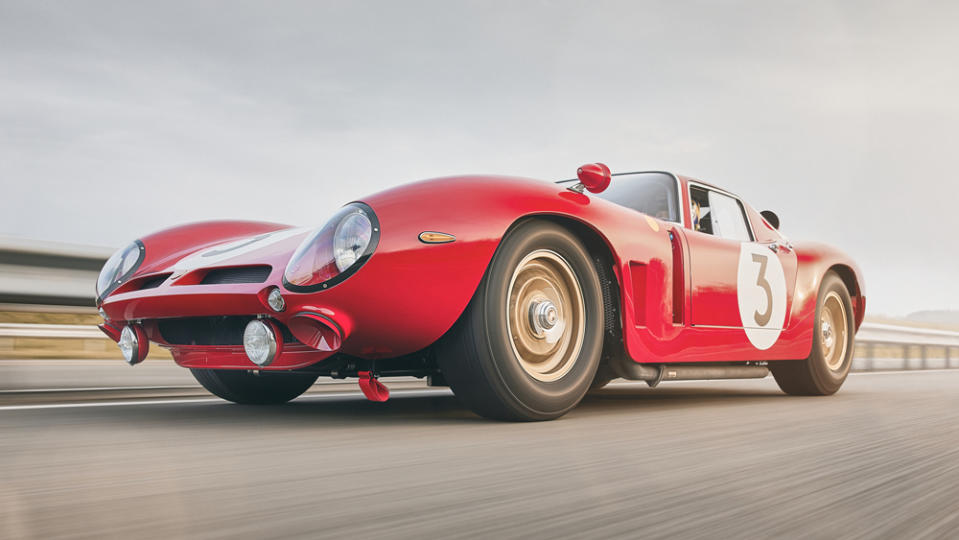
Revenge came swiftly for the young Giotto, however. After going freelance, he worked on the famous Ferrari 250 GT Drogo “Breadvan” for a privateer race team, then designed a new engine for Enzo’s archrival, Ferruccio Lamborghini. The legendary Bizzarrini V-12 first powered the Lamborghini 350 GT of 1964, remaining in production until the final Lamborghini Murciélago SV rolled off the line in 2010.
Bizzarrini also had ambitions to build his own car, first with the ill-fated Automobili Turismo e Sport (ATS) marque (which was briefly revived in 2019), then with the development of an Iso Grifo that was christened the Bizzarrini 5300 GT. Around 130 road-going Strada versions were produced, while the Corsa race car beat the odds—and the still-unreliable Ford GT40s—to finish ninth overall at Le Mans in 1965. There is some contention among motorsport historians about whether car 222 was actually still an Iso, but it certainly thrust Bizzarrini’s name into the public consciousness.
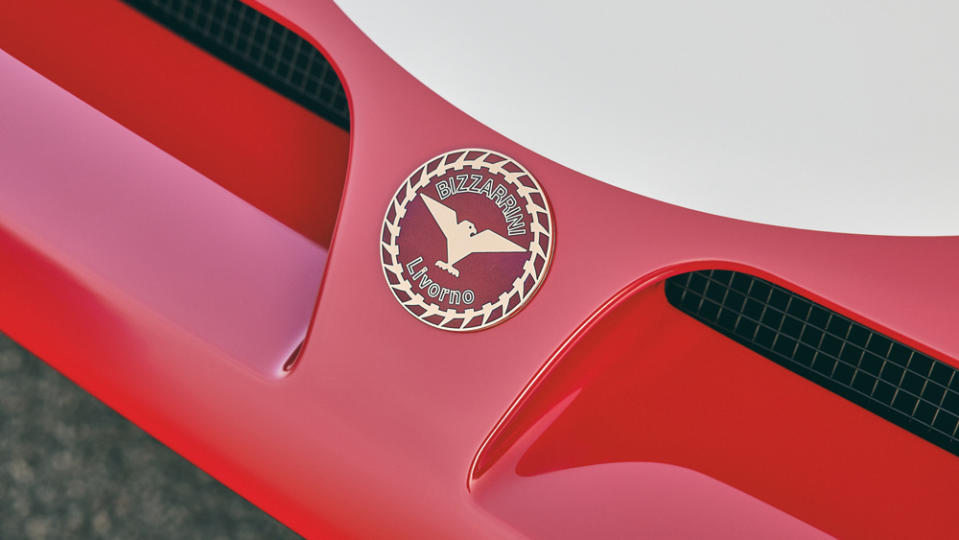
Sadly, this visionary engineer wasn’t so gifted in business, and his company was declared bankrupt in 1969. Now Bizzarrini is back, this time with backing from Pegasus Brands (owned by Kuwaiti national Rezam Mohamed Al Roumi) and it plans to celebrate the past before looking to the future. Enter the 5300 GT Corsa Revival.
Styled by Giorgetto Giugiaro, who still recalls standing in the pit lane with Steve McQueen at Circuit de la Sarthe in 1965, and based on a 3-D laser scan of car 222, the new Bizzarrini looks every inch the classic racer. Its voluptuous curves contrast with flat sides and an abrupt Kamm tail, all designed with high-speed aerodynamics in mind. The example I’m driving is carbon fiber, but you can specify a period-correct fiberglass body if you want to compete in historic racing.
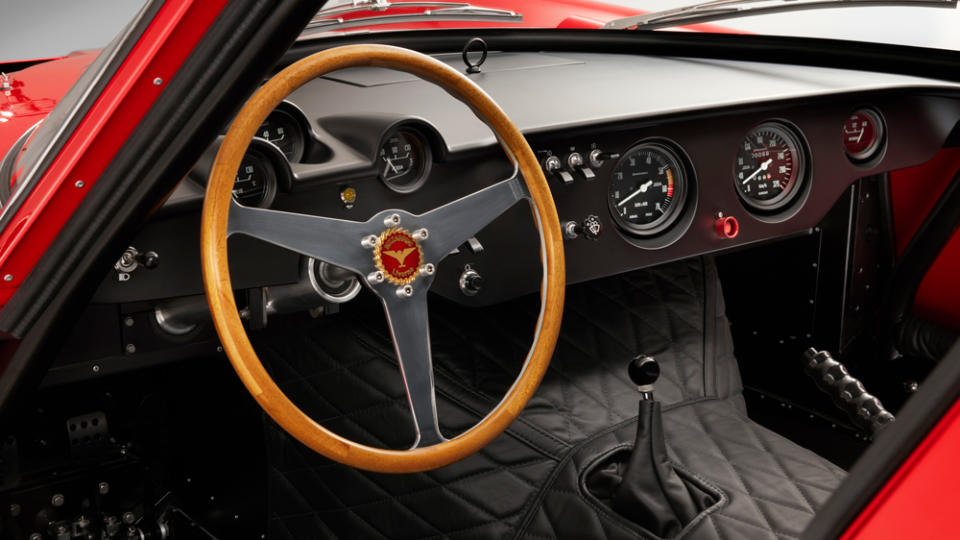
Other changes, compared to the car that Régis Fraissinet and Jean de Mortemart piloted at Le Mans, include modern fiberglass seats, a relocated FIA-spec fuel cell and an additional windshield wiper. In other respects, though, the Bizzarrini is as authentic as possible. Notable details include the same yellow “Prototipi” roundels, single wing mirror and upright door handles as the original race car.
The 5.4-liter Chevy V-8 under the hood is also very authentic. Mounted behind the front axle, and so far back that the 5300 GT is technically mid-engined, it breathes through four Weber carburetors and musters 400 hp. In a car that tips the scales at 2,712 pounds without fluids, that equals the same power-to-weight ratio as a new Porsche 911 GT3. Want more? Bizzarrini can build you a race-spec motor with 480 hp. Performance figures aren’t quoted, but the Revival’s gearing allows for a top speed of around 160 mph.

I pull on a crash helmet and contort myself through the roll cage. The Bizzarrini’s cabin is basic, but beautifully trimmed in black leather, with a low-slung driving position that favors long arms and short legs. The ergonomics, frankly, are a disaster, with the speedo and rev counter both in front of the passenger. At least the all-important gauges for oil pressure and water temperature are front-and-center, to help prepare for any sudden pit stops.
That said, while rival Ferraris of the day relied on peaky, high-maintenance V-12s, the Bizzarrini’s small-block V-8—shared with the C1 Corvette—feels absolutely bulletproof. It idles with the malevolent rumble of a muscle car, then pulls strongly from just 2,500 rpm. Even with a four-speed manual gearbox (spot the Roman numerals on the shifter knob—another quirk from car 222), it never seems to drop out of the powerband. It sounds sensational, too: the roar of induction and blare from the shotgun-style exhausts become utterly overwhelming.

My drive takes place at England’s Millbrook Proving Ground, a test track located near where the car is assembled (a task entrusted to UK-based RML Group, makers of the RML Short Wheelbase). The short and tightly coiled circuit probably doesn’t do this resurrected racer justice, but the balance and poise of the car’s chassis, which boasts all-independent suspension and perfect 50:50 weight distribution, is readily apparent. It simply loves to four-wheel drift. Despite the sound and fury of that V-8, the 5300 GT Corsa Revival feels more composed and confidence-inspiring than most cars of the era it represents. More fun, too.

The next Bizzarrini will be very different: a modern hypercar with styling by Giugiaro and a free-breathing 1,000 hp V-12, due to be revealed later this year. The company promises “a car for connoisseurs,” rather than one that chases lap times or speed records. Giotto Bizzarrini, still going strong at 96 years old, is said to have given the project his blessing.
Click here to see more photos of the Bizzarrini 5300 GT Corsa Revival.
Best of Robb Report
The Chevy C8 Corvette: Everything We Know About the Powerful Mid-Engine Beast
The 15 Best Travel Trailers for Every Kind of Road-Trip Adventure
Sign up for Robb Report's Newsletter. For the latest news, follow us on Facebook, Twitter, and Instagram.


